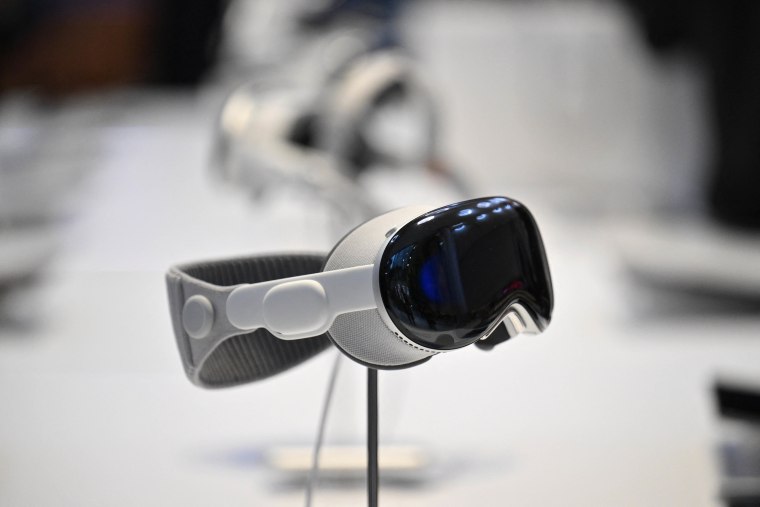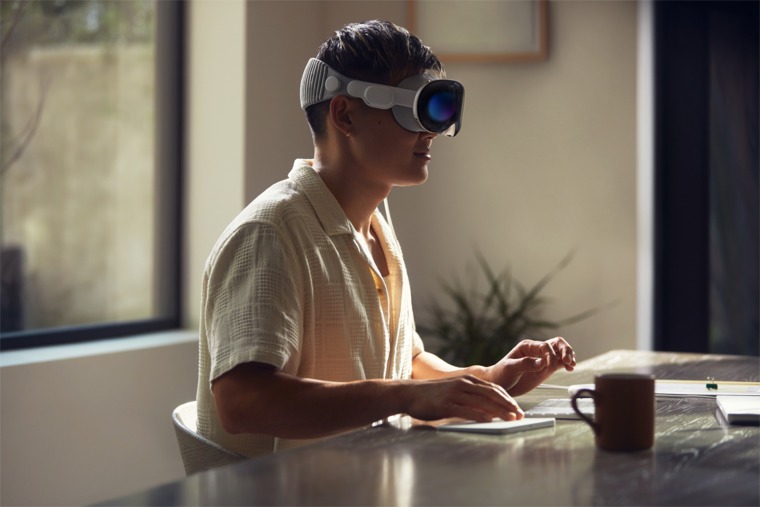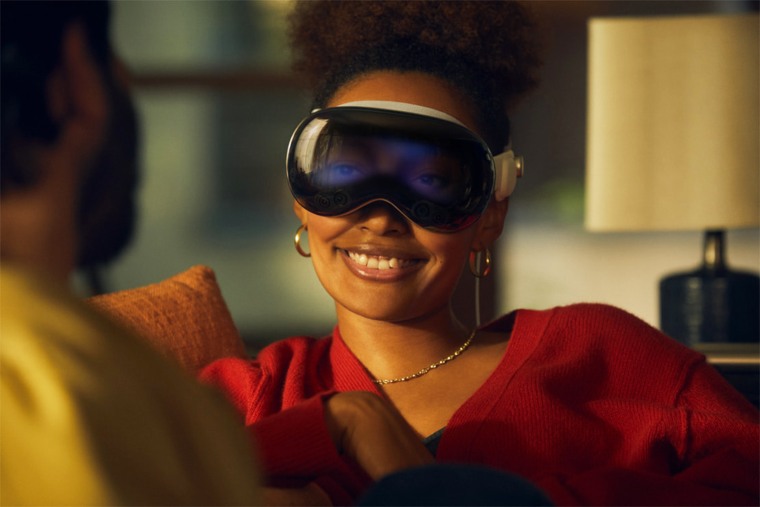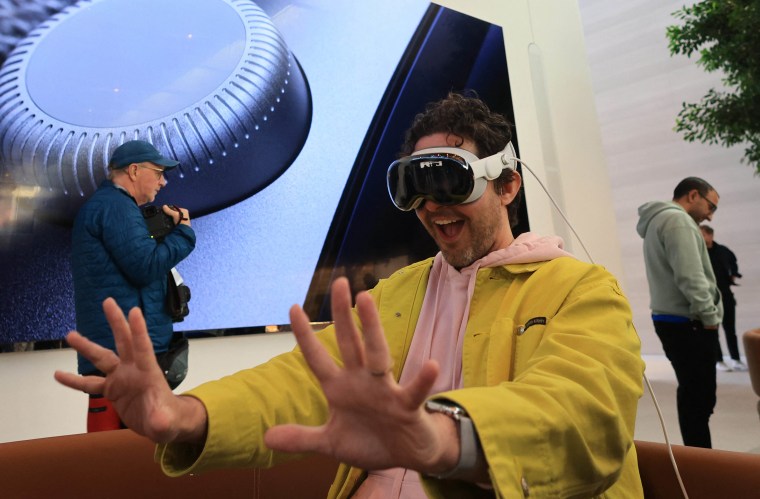When Daniel Lugasi, a portfolio manager at VL Capital Management in Orlando, FL, found himself in a vortex of Apple ads and YouTube reviews of the new Apple Vision Pro, he knew he needed to get his hands on the device to try it firsthand.
While Lugasi initially went on the Apple online store on January 19, 2024, to pre-order the Apple Vision Pro, he was dismayed to see “almost immediately ship times stretched from the launch day on February 2, 2024, to well into March.”
Thankfully, three days before the Apple Vision Pro’s unveiling, he was able to order a device online for in-store pickup on launch day. At his local Apple outpost at The Florida Mall, the Vision Pro was flying off the shelves.
After returning home, Lugasi could quickly see why: “I can confidently say that the Vision Pro is the most impressive consumer technology device that I have ever tried,” he says, noting that he has been following consumer technology companies for a number of years, both personally and professionally.
Apple Vision Pro Price
Burton Kelso, chief tech expert at Integral, also isn’t surprised by the gadget selling like hot cakes, despite its hefty price tag starting at $3,499. “It seems anytime Apple releases a new product, there is a frenzy surrounding that product release,” says Kelso, noting that this is no exception for the Apple Vision Pro, considering people have waited at least two years for its debut. “Also, the fact that Apple is seen as an innovator when it comes to new products, people always have their eyes focused on any release that Apple has,” he adds.
“Whenever there are shifts in technology, the underlying question is where does Apple stand?” echoes Neil Mandt, an AI expert based in Los Angeles. “Meta, Google, Lenovo and Samsung have all thrown their collective hats in the VR/AR arenas with varying degrees of success, However, now that Apple has joined the party, the company’s true believers have been activated and are sharing their enthusiasm across the internet.”
Indeed, if you spend any time on TikTok these days, you may have very well watched a video — or 800 — featuring the new Apple Vision Pro.
Despite the device taking social media by storm, you may be wondering what exactly this high-tech gizmo is, what it does, and user feedback. Ahead, everything you need to know about the Apple Vision Pro.

What is the Apple Vision Pro?
First things first, a quick overview of what precisely the device is. Mandt, who personally has an Apple Vision Pro and has been sharing his experience on social media, breaks it down: “Apple Vision Pro is a head mounted display (HMD) that offers users the ability to experience both virtual reality and augmented reality content with one device,” he explains, sharing that the awareness of virtual reality has penetrated the consciousness of many around the world since Mark Zuckerberg first announced the Oculus VR Goggles nearly a decade ago.
“Augmented reality on the other hand has eluded the masses, but not for much longer. The most famous AR is the first down yellow line that appears on-screen during a televised football game,” he continues, further commenting that Tim Cook has stated on many occasions that he believes augmented reality will fundamentally change the human experience.

Simply put, per Kelso, the Apple Vision Pro is essentially a computer that sits on your head. “It runs on the visionOS which allows individual users to utilize Apple apps without having access to a physical iPhone, iPad, MacBook or iMac as well as immerse themselves in the ‘Appleverse,’” says Kelso. “To achieve this, the Vision Pro has advanced 3-D cameras, and sensors that give you an immersive virtual experience.”
What does the Apple Vision Pro do?
From the moment Lugasi turned on his Apple Vision Pro, he was amazed.
“The first time you put the device on and see the familiar Apple apps overlaid on the real word, it is wild. A quick spin of the Digital Crown and the real world disappears, and you are instantly transported to Mount Hood or Joshua Tree,” he recalls, adding that being able to open countless apps and manipulate the windows using just your eyes and hands is truly magical. The portfolio manager was also particularly impressed by its 3-D video capabilities: “Watching a movie such as ‘Avatar’ in 3-D on Disney Plus, while sitting in a virtual Disney movie theater, is really remarkable,” says Lugasi. “You can easily see how the future of entertainment will change because of the Vision Pro.”
But the Apple Vision Pro isn’t only for leisure time — the game-changing headset also “allows its users to work in a virtual world with apps that are specifically designed for this device,” says Kelso, referencing the viral video of the man on the New York City subway using his Apple Vision Pro to crank out some work (presumably).
Currently, according to Mandt, “the two most popular uses are using the eyewear to mirror a computer screen, or a series of screens in your space. These screens can be large or small and can be placed as augmented reality overlays anywhere in a room.” Plus, “another use case that immediately became popular was watching a big screen TV projection of a movie or series, the screen can be as large as IMAX and has built-in surround sound,” says Mandt.
A third application in which folks are using their headset? To play games on console devices, such as the PS5, says Kelso. As time goes on, expect the manner in which people use the Apple Vision Pro to expand and evolve.
Luke Hurd, director of spatial experience design at VML, elaborates that people use the Apple Vision Pro the same way they would use their laptop or iPad. “You can create and edit like you would on an iPad, or you can be productive editing documents, taking meetings, etc.,” he says.
As for Hurd, the first thing he did on the headset was create an app that put a life-size DeLorean Time Machine from ‘Back To The Future’ in his backyard, “because why not?”
Apple Vision Pro Review
Hurd, who has had his Apple Vision Pro since early February has used the headset as his primary computer for the past few days. “I am currently typing to you on the Apple Vision Pro by extending my 13” MacBook to the [device] and I am building three different apps at the moment (one for myself, two for clients),” he comments. “I honestly look forward to these becoming just as boring as the laptop you carry around, but every bit as important.”
So far, he’s been impressed by its functionality. “If I want to shop I can buy things with Apple Pay (it just scans my eyes, completely hands-free). If I want to listen to my massive music library, I just open Apple Music,” shares Hurd. “I can record my screen with a simple record button and airdrop it over to my phone — it’s the most comprehensive in-headset experience I have ever tried,” he continues, noting that while it’s not perfect, it has set the standard of top-tier experience design for mixed reality and spatial experiences.

That said, while “the positive aspects of the Apple Vision Pro certainly outweigh the negatives, there are certain features that I expect Apple will improve in future iterations,” says Lugasi. First, he states that the passthrough camera that allows for augmented reality (and for users to see their real surrounding environs) is rather poor quality compared to how Apple has portrayed it in their advertisements. “Apple shows the wearer seeing a perfectly clear representation of their environment, but the unfortunate reality is that the pass-through image is rather grainy,” says Lugasi. “Also, while the navigation using your eyes and hand gestures is very seamless, Apple will need to come up with alternate gestures for other actions,” he continues, citing that the only way to pull up your apps is to reach on top of your head and press the Digital Crown.
Mandt, who has “used just about every VR and AR device that’s been available to the public over the last decade,” including some that required him to sign an NDA, says that what makes the Vision Pro so different is how intuitive the experiences are. “The imagery is crisp, while the navigation responds to human engagement with ease,” he says.
And did we mention the headset can make everyday tasks a blast? If that isn’t a selling point, we don’t know what is.
What does the future hold for the Apple Vision Pro?
So far, users appear to be thrilled with the innovation, and its impact is only nascent. “If I had to describe the experience of the Vision Pro in one word, it would be transformative. Long-term, I believe this device could even be more impactful than the iPhone,” says Lugasi. “It will transform entertainment including movies, live sports, and concerts. The Vision Pro will also change how we socialize, work and learn.” Lugasi also predicts Apple will reach critical mass, in terms of sales, by making the device thinner and lighter, as well as lowering the price over time. “For the time being, though, the only way for people to understand the magic of the device is to try it themselves.”

